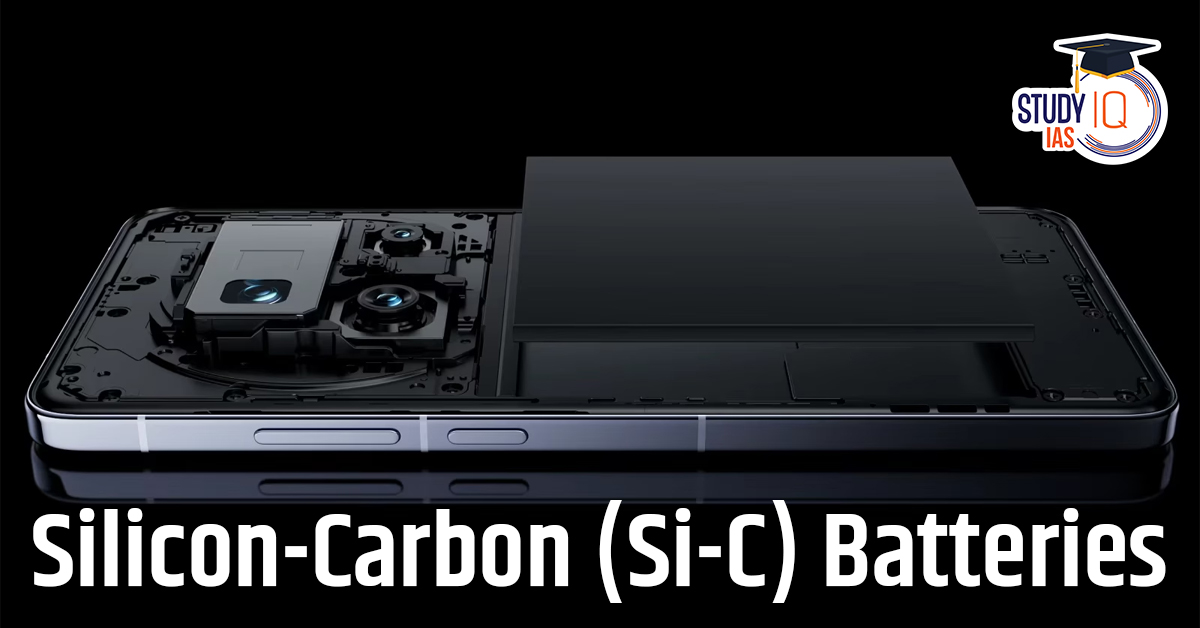Table of Contents
Context: Several top Android smartphone brands have incorporated Si-C batteries into their flagship devices
What are Silicon Carbon Batteries?
Silicon-carbon batteries are an advancement over lithium-ion batteries, maintaining the same lithium-based cathode while replacing the conventional graphite anode with a silicon-carbon composite.
Key Difference from Lithium-Ion Batteries:
✅ Higher Energy Density → Holds more charge per gram, improving battery life.
✅ Smaller & Lighter → Can be made thinner while storing more energy.
✅ Faster Charging → Allows quicker power replenishment.
Challenges of Silicon-Carbon Batteries
- Silicon Swelling Issue: Silicon expands by up to 300% during charging, which can lead to:
- Structural damage and cracking.
- Reduced battery lifespan.
- Faster performance degradation compared to lithium-ion batteries.
- Higher Manufacturing Costs: Silicon-carbon anodes are more expensive to produce than graphite anodes.
- Practical Energy Density Variations: Although theoretical energy capacity is higher, real-world performance varies based on device and usage.


 SHANTI Bill 2025: India Opens Nuclear Se...
SHANTI Bill 2025: India Opens Nuclear Se...
 Revamp of MGNREGA Scheme 2025
Revamp of MGNREGA Scheme 2025
 National Energy Conservation Awards 2025
National Energy Conservation Awards 2025

























